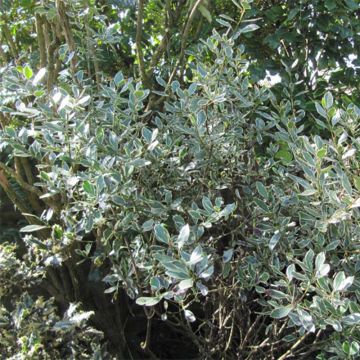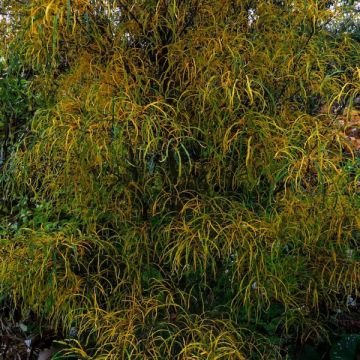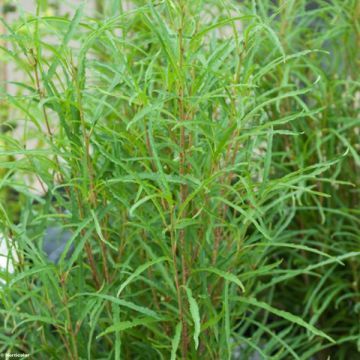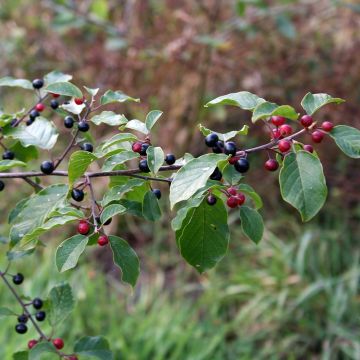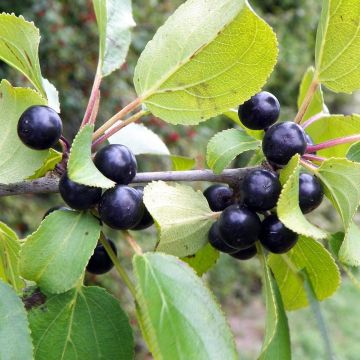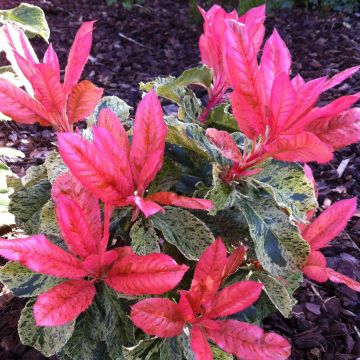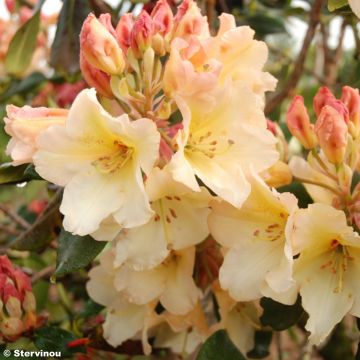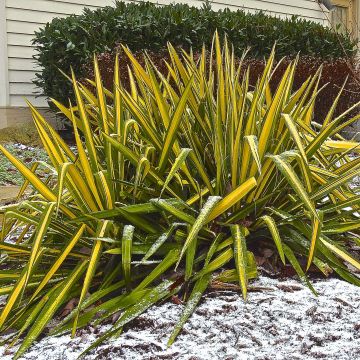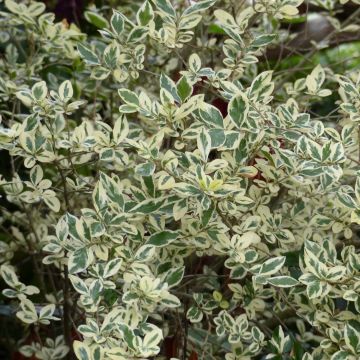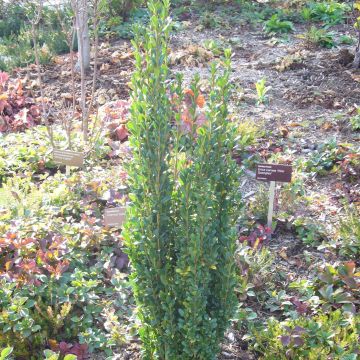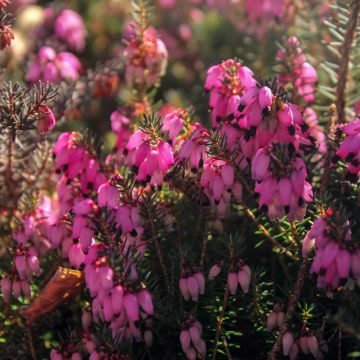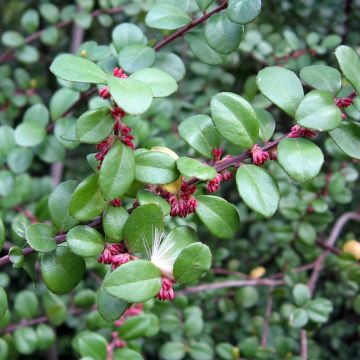

Rhamnus alaternus
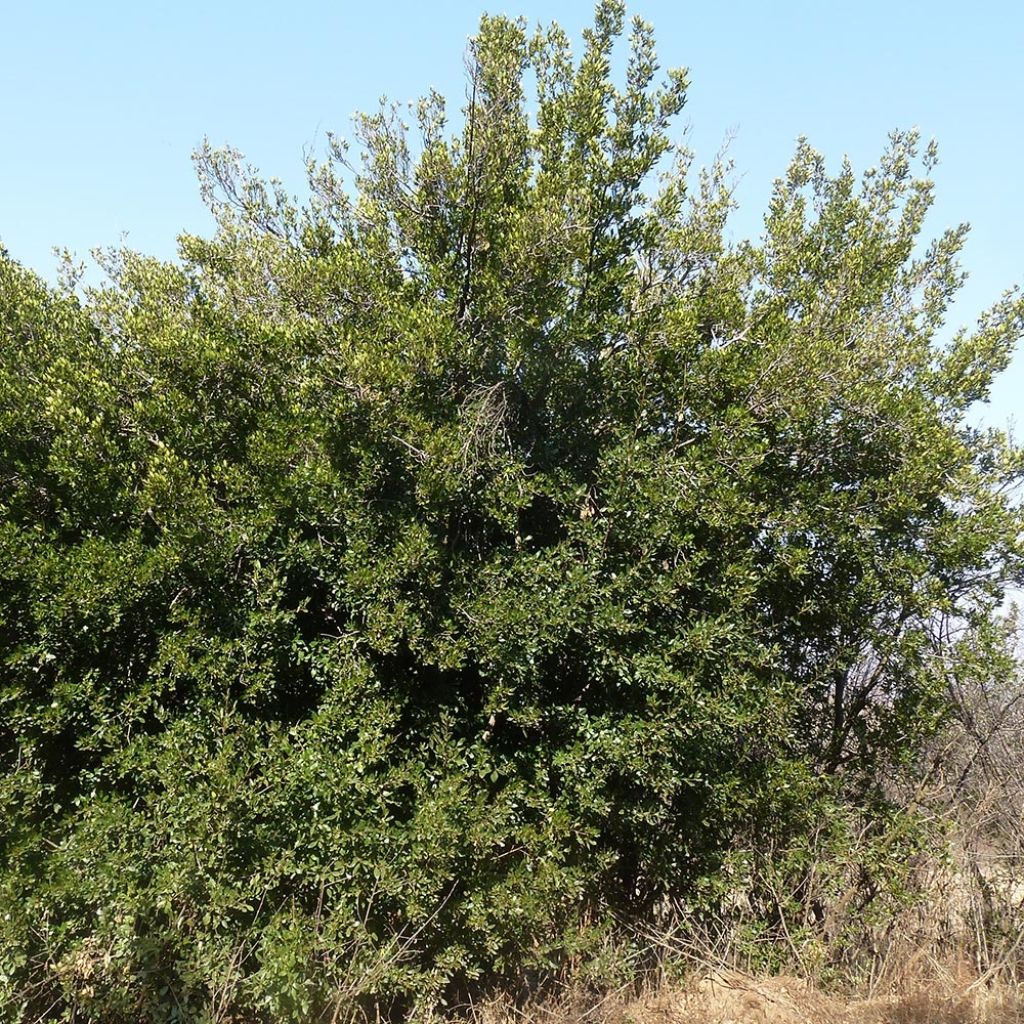

Rhamnus alaternus
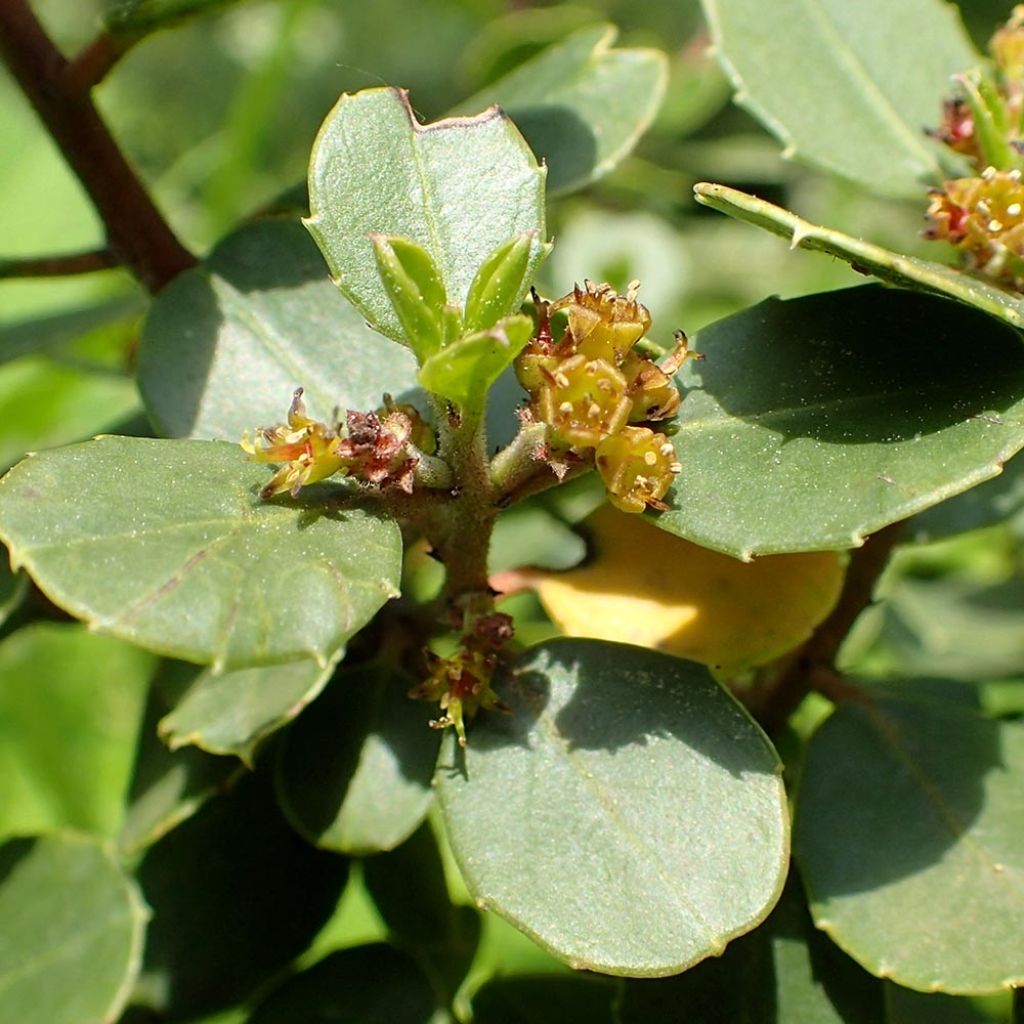

Rhamnus alaternus
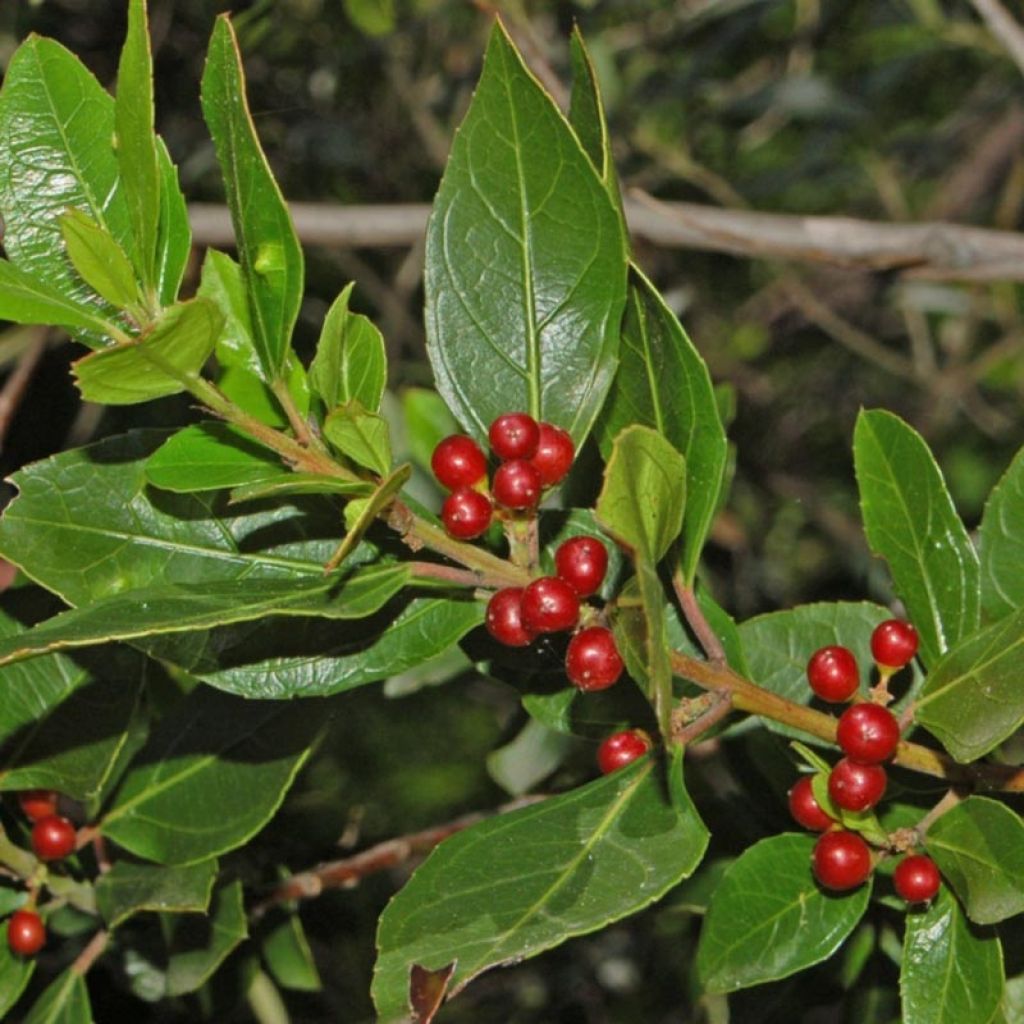

Rhamnus alaternus
Rhamnus alaternus
Rhamnus alaternus
Italian Buckthorn, Mediterranean Buckthorn, Barren Privet
At our place in the highlands, on the limestone slopes of the Dordogne, Sarladais, there are plenty of them, on a dry, rocky terrain, garrigue-like, facing south. Very old jeues and sulets, with a trunk diameter of 10cm (4in) and around 50 years being the maximum seen (dead tree), hyper-hard wood, midrib dark brown resembling rosewood, with a very contrasting light yellow outer part, superb wood very dense (like boxwood!) ideal for cutlery.
Anaïs, 26/10/2022
Special offer!
Receive a €20 voucher for any order over €90 (excluding delivery costs, credit notes, and plastic-free options)!
1- Add your favorite plants to your cart.
2- Once you have reached €90, confirm your order (you can even choose the delivery date!).
3- As soon as your order is shipped, you will receive an email containing your voucher code, valid for 3 months (90 days).
Your voucher is unique and can only be used once, for any order with a minimum value of €20, excluding delivery costs.
Can be combined with other current offers, non-divisible and non-refundable.
Why not try an alternative variety in stock?
View all →This plant carries a 24 months recovery warranty
More information
We guarantee the quality of our plants for a full growing cycle, and will replace at our expense any plant that fails to recover under normal climatic and planting conditions.

Would this plant suit my garden?
Set up your Plantfit profile →
Description
Rhamnus alaternus, also known as Mediterranean Hawthorn, is one of the best shrubs to add evergreen structure to a dry garden, even in the driest and poorest of soils. Discreet but present all year round, its small, toothed, leathery-shiny green leaves, are reminiscent of holly, and although its yellowish spring flowering is inconspicuous, it is slightly fragrant, honey-producing, and provides food for bees in early spring. It is followed on female plants by pretty, red berries that turn black when ripe, delighting birds in autumn. This unpretentious shrub is perfectly adapted to areas that are particularly difficult to green, such as root-filled undergrowth and coastal gardens, directly exposed to sea spray. It will also be perfect in a low-maintenance evergreen hedge.
The Italian Hawthorn is a wild shrub native to the scrublands and limestone hills of countries bordering the Mediterranean. It is found in fallow land, hedges, on the edge of forests, and even in oak and pine undergrowth. It is also present in Turkey, Israel, Libya, and Ukraine. This particularly robust species is used in reforestation programs after fires. Rhamnus alaternus belongs to the family Rhamnaceae, being a cousin of Alder Buckthorn (Rhamnus frangula), as well as Ceanothus. It is a dioecious shrub, with individuals being either male or female. It can live for many years in a garden and can self-seed in dry gardens.
Rhamnus alaternus has a bushy, branched, and upright habit, almost a little stiff; it can reach a height of 4 to 5 m (13 to 16ft) with a spread of 2 to 3 m (7 to 10ft), depending on growing conditions. Its growth is rather fast, about 20 to 30 cm (8 to 12in) per year. Its deep brown branches bear small alternate leaves, 2 to 5 cm (1 to 2in) long, on short reddish petioles, entire, ovate to lanceolate in shape, tough, often toothed, and cartilaginous at the edges. The upper surface of the lamina is shiny, dark green, and the lower surface is lighter. Flowering takes place from March to May, depending on the climate, in the form of tiny yellowish to greenish flowers, without petals, grouped in small clusters in the axils of the leaves. They are not very visible but pleasantly fragrant, attracting many pollinating insects. Only female plants, in the presence of male plants, produce pretty, red berries, enhanced by the dark foliage. This plant prefers warm and dry climates in summer, and well-drained, rocky soils with a calcareous tendency.
Dry undergrowth of old trees, stony gardens or coastal hedgerows can be difficult areas to landscape. Yet nature has provided a perfect solution with this Rhamnus: a robust shrub, able to settle willingly in scrubby hedgerows, to the delight of the bewildered gardener. With good hardiness down to -10 °C/-12 °C (10.4°F) in well-drained soil, it becomes perfectly autonomous once established. Rhamnus alaternus belongs to a group of shrubs that are absolutely essential for any gardener who wants to create an authentic Mediterranean setting, along with Narrow-leaved Mock Privet (Phillyrea angustifolia and P. latifolia), Mastic Tree (Pistacia lentiscus), Cherry Laurel, Tarentum myrtle (Myrtus tarentina), and Boxwood.
Rhamnus alaternus in pictures
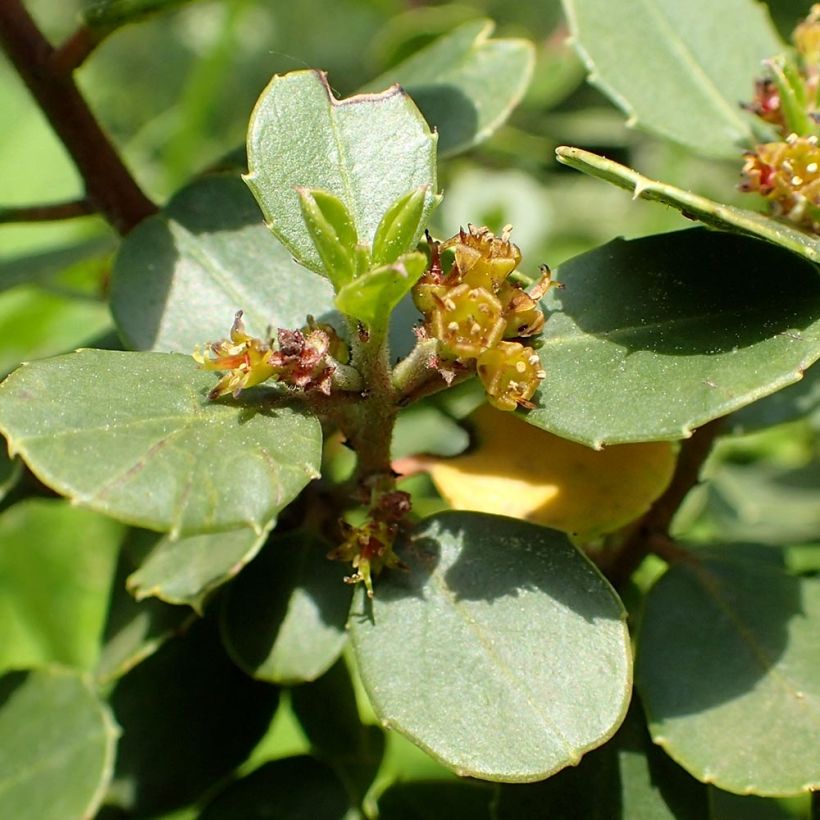

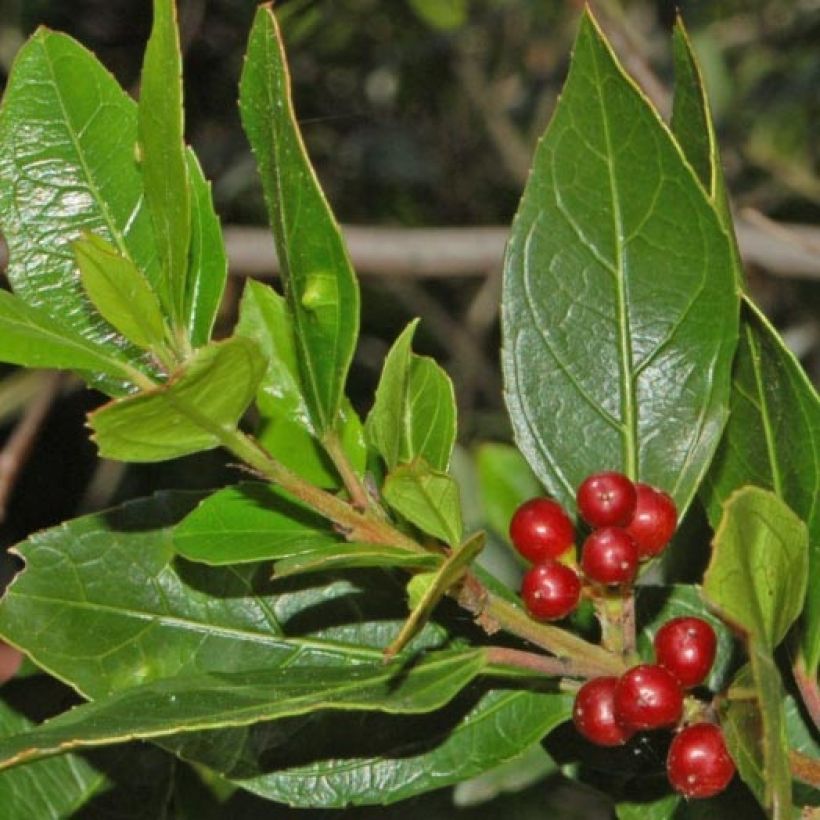

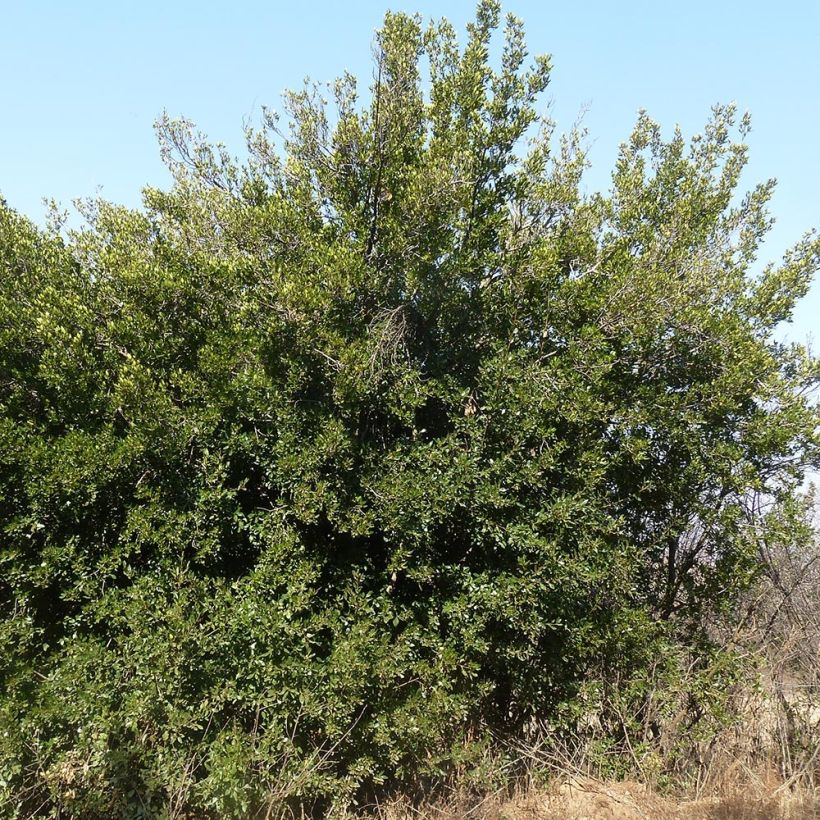

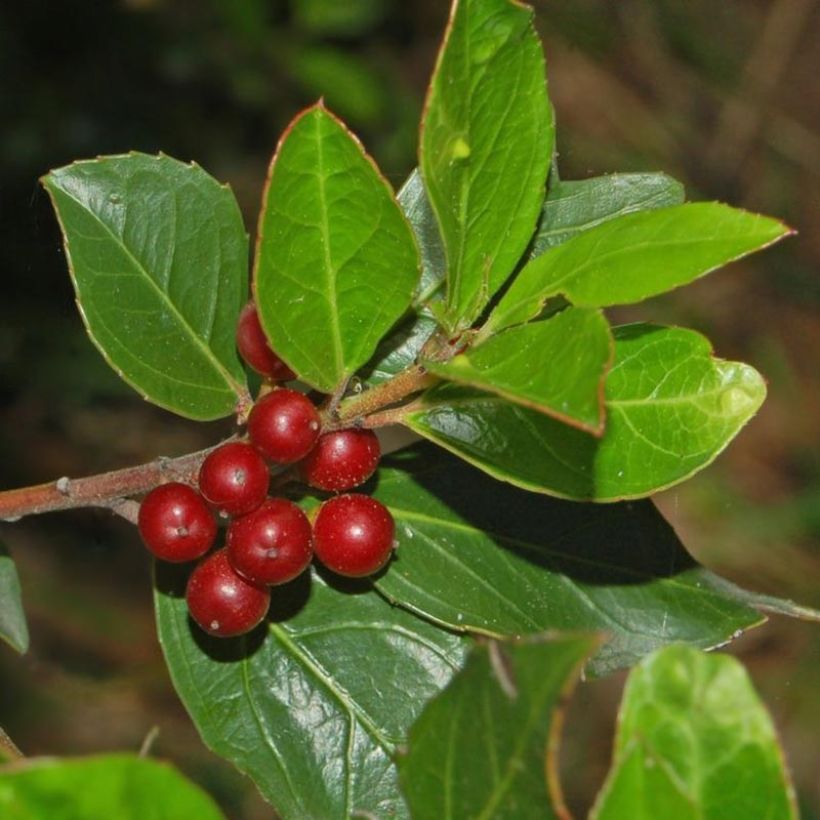

Plant habit
Flowering
Foliage
Botanical data
Rhamnus
alaternus
Rhamnaceae
Italian Buckthorn, Mediterranean Buckthorn, Barren Privet
Mediterranean
Other Rhamnus
View all →Planting and care
Place Rhamnus alaternus in a sunny, partially shaded, or even shaded position in dry and warm areas. Plant in ordinary, well-loosened, and well-drained soil. It prefers calcareous soils, but it is not very demanding and adapts to poor, clay-limestone, and stony soils. Summer drought is not a problem once the shrub is well established. You can plant it all year round, excluding periods of frost and intense drought, mixing your garden soil, if poor, with compost, coarse sand, gravel, perlite, or any material that does not retain moisture if your soil has a heavy or clayey tendency. Water generously once or twice a week to promote growth. Water only twice a month from the third year onwards, and only in case of drought. It requires very little maintenance and grows without difficulty in suitable conditions. Pruning is not essential. You can lightly prune the branches after flowering to encourage the plant to branch out. Fertiliser is not essential (just add a little crushed horn powder at the bottom of the planting hole) but can sometimes be useful in very poor soil. Avoid severe pruning.
Planting period
Intended location
Care
Planting & care advice
-
, onOrder confirmed
Reply from on Promesse de fleurs
Similar products
Haven't found what you were looking for?
Hardiness is the lowest winter temperature a plant can endure without suffering serious damage or even dying. However, hardiness is affected by location (a sheltered area, such as a patio), protection (winter cover) and soil type (hardiness is improved by well-drained soil).

Photo Sharing Terms & Conditions
In order to encourage gardeners to interact and share their experiences, Promesse de fleurs offers various media enabling content to be uploaded onto its Site - in particular via the ‘Photo sharing’ module.
The User agrees to refrain from:
- Posting any content that is illegal, prejudicial, insulting, racist, inciteful to hatred, revisionist, contrary to public decency, that infringes on privacy or on the privacy rights of third parties, in particular the publicity rights of persons and goods, intellectual property rights, or the right to privacy.
- Submitting content on behalf of a third party;
- Impersonate the identity of a third party and/or publish any personal information about a third party;
In general, the User undertakes to refrain from any unethical behaviour.
All Content (in particular text, comments, files, images, photos, videos, creative works, etc.), which may be subject to property or intellectual property rights, image or other private rights, shall remain the property of the User, subject to the limited rights granted by the terms of the licence granted by Promesse de fleurs as stated below. Users are at liberty to publish or not to publish such Content on the Site, notably via the ‘Photo Sharing’ facility, and accept that this Content shall be made public and freely accessible, notably on the Internet.
Users further acknowledge, undertake to have ,and guarantee that they hold all necessary rights and permissions to publish such material on the Site, in particular with regard to the legislation in force pertaining to any privacy, property, intellectual property, image, or contractual rights, or rights of any other nature. By publishing such Content on the Site, Users acknowledge accepting full liability as publishers of the Content within the meaning of the law, and grant Promesse de fleurs, free of charge, an inclusive, worldwide licence for the said Content for the entire duration of its publication, including all reproduction, representation, up/downloading, displaying, performing, transmission, and storage rights.
Users also grant permission for their name to be linked to the Content and accept that this link may not always be made available.
By engaging in posting material, Users consent to their Content becoming automatically accessible on the Internet, in particular on other sites and/or blogs and/or web pages of the Promesse de fleurs site, including in particular social pages and the Promesse de fleurs catalogue.
Users may secure the removal of entrusted content free of charge by issuing a simple request via our contact form.
The flowering period indicated on our website applies to countries and regions located in USDA zone 8 (France, the United Kingdom, Ireland, the Netherlands, etc.)
It will vary according to where you live:
- In zones 9 to 10 (Italy, Spain, Greece, etc.), flowering will occur about 2 to 4 weeks earlier.
- In zones 6 to 7 (Germany, Poland, Slovenia, and lower mountainous regions), flowering will be delayed by 2 to 3 weeks.
- In zone 5 (Central Europe, Scandinavia), blooming will be delayed by 3 to 5 weeks.
In temperate climates, pruning of spring-flowering shrubs (forsythia, spireas, etc.) should be done just after flowering.
Pruning of summer-flowering shrubs (Indian Lilac, Perovskia, etc.) can be done in winter or spring.
In cold regions as well as with frost-sensitive plants, avoid pruning too early when severe frosts may still occur.
The planting period indicated on our website applies to countries and regions located in USDA zone 8 (France, United Kingdom, Ireland, Netherlands).
It will vary according to where you live:
- In Mediterranean zones (Marseille, Madrid, Milan, etc.), autumn and winter are the best planting periods.
- In continental zones (Strasbourg, Munich, Vienna, etc.), delay planting by 2 to 3 weeks in spring and bring it forward by 2 to 4 weeks in autumn.
- In mountainous regions (the Alps, Pyrenees, Carpathians, etc.), it is best to plant in late spring (May-June) or late summer (August-September).
The harvesting period indicated on our website applies to countries and regions in USDA zone 8 (France, England, Ireland, the Netherlands).
In colder areas (Scandinavia, Poland, Austria...) fruit and vegetable harvests are likely to be delayed by 3-4 weeks.
In warmer areas (Italy, Spain, Greece, etc.), harvesting will probably take place earlier, depending on weather conditions.
The sowing periods indicated on our website apply to countries and regions within USDA Zone 8 (France, UK, Ireland, Netherlands).
In colder areas (Scandinavia, Poland, Austria...), delay any outdoor sowing by 3-4 weeks, or sow under glass.
In warmer climes (Italy, Spain, Greece, etc.), bring outdoor sowing forward by a few weeks.






























